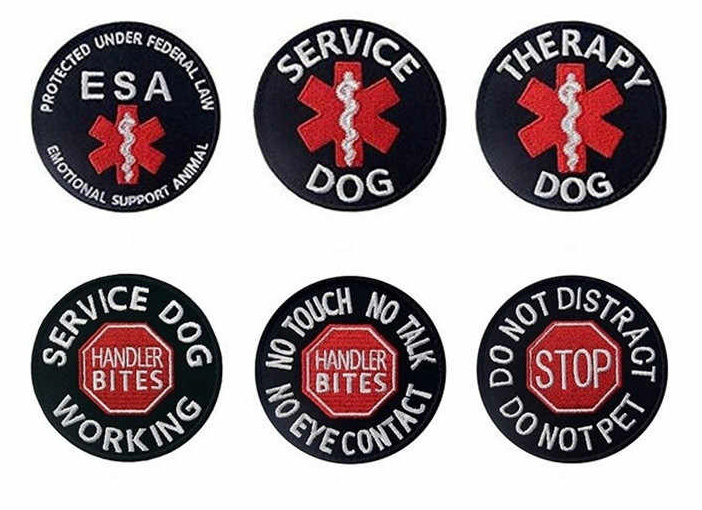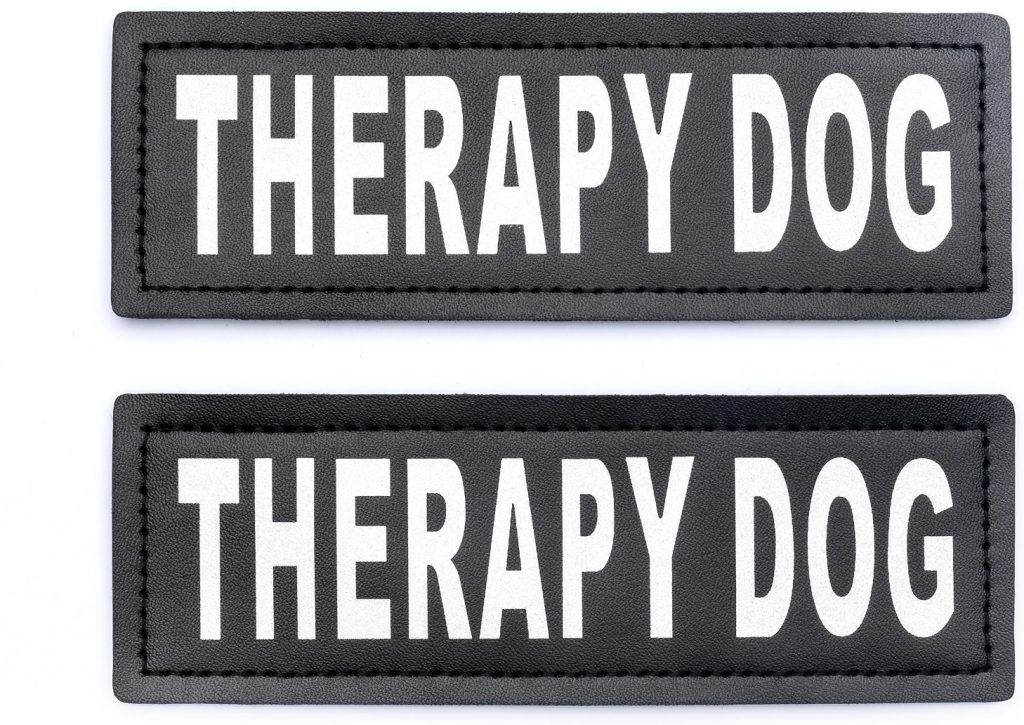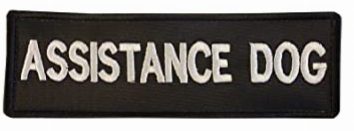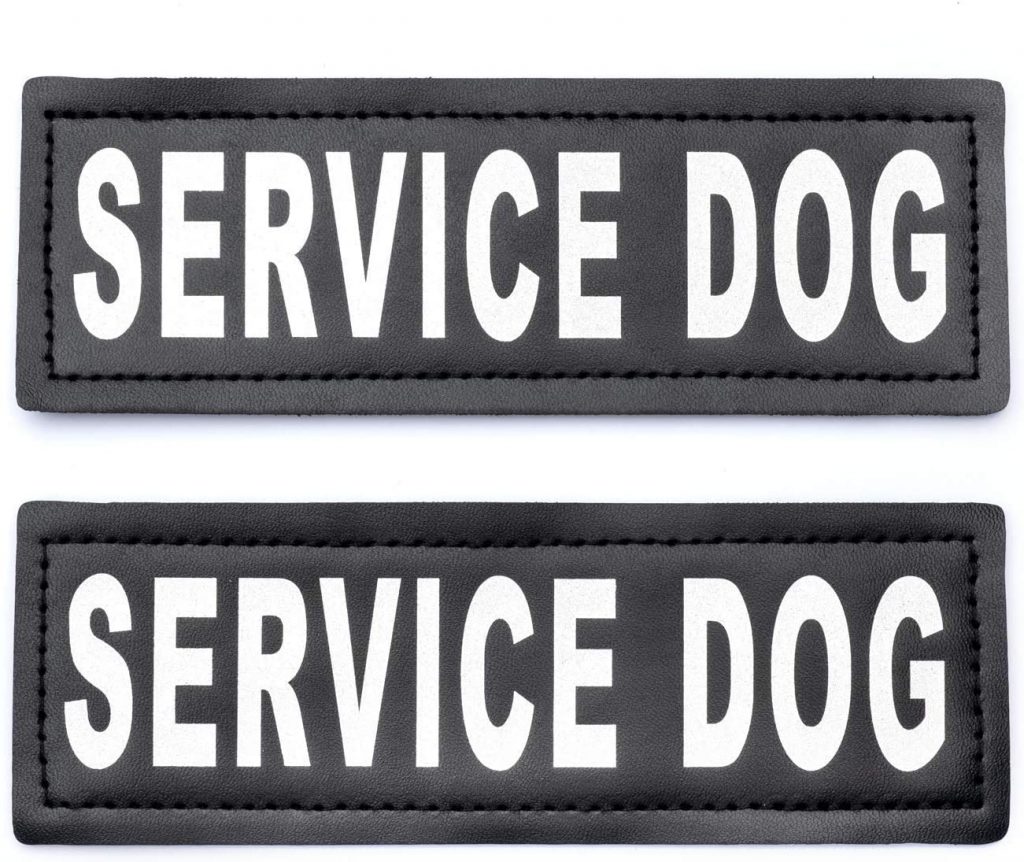
DISTINGUISHING BETWEEN THE TYPES OF “HELPING DOGS” CAN BE COMPLICATED, ESPECIALLY WHEN MANY PEOPLE (INCLUDING BUSINESSES AND EVEN HANDLERS) CONFUSE THEM FREQUENTLY. IN THIS ARTICLE WE AIM TO CLEAR UP THE DIFFERENCES BETWEEN THEM AND WHAT IS MEANT BY EACH TERM
In Short
ESA stands for Emotional Support Animal. A definition used in the US for animals that may have legal rights into non pet friendly housing and on planes to travel across states.
Therapy Dogs are invited into areas and provide comfort to multiple places. They are almost always part of a larger organisation. They are never for the comfort of their owner.
Assistance Dogs assist a disabled handler allowing them to function at a higher level.
Service dogs in the UK usually refers to dogs working for the police, military, search and rescue, etc. They can be attack dogs, drug detection dogs, bomb detection dogs, human search dogs, guard dogs and more. Although in the US service dogs are what the UK call assistance dogs.
Emotional Support Animals – a guide
Emotional support animals in the US (also referred to as a support animal) are a companion animal (pet) that a US medical professional says provides some benefit for a person disabled by a mental health condition or emotional disorder.

An emotional support animal differs from a service animal (dog). Service animals are trained to mitigate their handlers disability, while emotional support animals receive no specific training. By US law service animals have access rights, ESA’s do not.
Any animal that provides support, well-being, comfort, or aid, to an individual through companionship, non-judgemental positive regard, and affection may be regarded as an emotional support animal. These are not necessarily dogs, they can be cats or other domestic animals.
In the US, disabled people with emotional support animals are exempted from certain rules against having animals in most housing and travel situations. This is under United States federal law, they must have a letter from their healthcare providers stating that they are being treated for a disabling condition and that their ESA improves or benefits some component of the disability.
EVERYTHING mentioned above is what an Emotional Support Animal is according to the United States. There is nothing in UK law about emotional support animals therefore they are not recognised or protected. Others may argue this and you may win an argument for housing but it would be a civil matter which can be pricey and still end in failure.
Because of the digital age we live in, businesses are misled by dogs labelled as ESAs. Just because you know someone with an ESA, your doctor is writing you a letter for one, or your local business welcomes them, doesn’t mean that the United Kingdom supports or recognises them as a government and country. Doctors are NOT educated about ESAs, businesses are NOT educated about ESAs, and your friend is unlikely to be educated about ESAs either. There is no legally binding registry either.
This does not mean that ESAs can’t have a place in the UK, it merely means at this moment in time the law does not recognise them and they therefore do NOT have access rights to non-pet friendly places.
Therapy Dogs – a guide

Therapy animals are animals that are trained to provide affection, comfort and love to people in hospitals, retirement homes, nursing homes, schools, hospices and disaster areas. Their handler or owners are not the people who benefit from therapy animals. The main job of a therapy animal is to enrich the life of the people they come across when working.
Therapy animals are trained and insured by private organisations, these companies may or may not be charities. These private companies award the title of therapy animal to ones that meet their criteria. Each organisation can have different standards for therapy animals.
When a therapy animal is inside non-pet friendly places, the organisation they are under has been given permission by the premises holder to enter and their dogs provide their service to the people present. Essentially the dogs are employees under the organisation, and the company, premises, organisation they are visiting have hired them for entertainment.
The most common therapy animal is a therapy dog but you will also find therapy cats, birds, rabbits, reptiles and more.
Therapy animals are not defined or protected in UK law. Therefore they do not have access rights that are protected by law. They only have access to places like hospices, hospitals, schools etc. through formal business agreements between the therapy dog organisation and the host.
A commonly identified therapy dog organisation in the UK is Pets As Therapy (PAT) although there are many other small organisations. There are not “owner trained” therapy dogs in the same way there are owner trained assistance dogs as the help the dogs provide is for others, not the individual.
Assistance Dogs – the definition

➊ A dog that is trained to help a disabled person with a disabling disability access goods or a service and can behave appropriately is class as an Assistance Dog.
➋ Assistance Dogs that help a disabled person access goods or a service is classed as an auxiliary aid.
➌ An auxiliary aid is a piece of equipment or technology that can help a disabled person access goods or a service.
The key word above is TRAINED. To find out more about Assistance Dogs in Training check out our page about them. Training is not a simple process and not all dogs are able to be trained or capable of the assistance dog lifestyle. It is hard, stressful and tiring… many dogs are not capable of handling it.
There are breeds more suited for AD work than others and ways of choosing a suitable dog or puppy to begin the training process. There are also many ways to go about training a dog.
Service Dogs – a guide

Service Dogs that help a disabled partner is a term used in the US and a few other countries. In the UK we use the term Assistance Dog instead. There is one specific organisation who uses the term Service Dog in regards to their assistance dogs for veterans (ex-servicemen and women) but beyond this, the term Assistance Dogs is used.
Inside the UK when we use the term Service Dog we are usually referring to dogs working alongside or with civil services such as; police, military, search and rescue. This will include drug detection dogs, bomb detection dogs, attack dogs, guard dogs, disaster response dogs and more.

